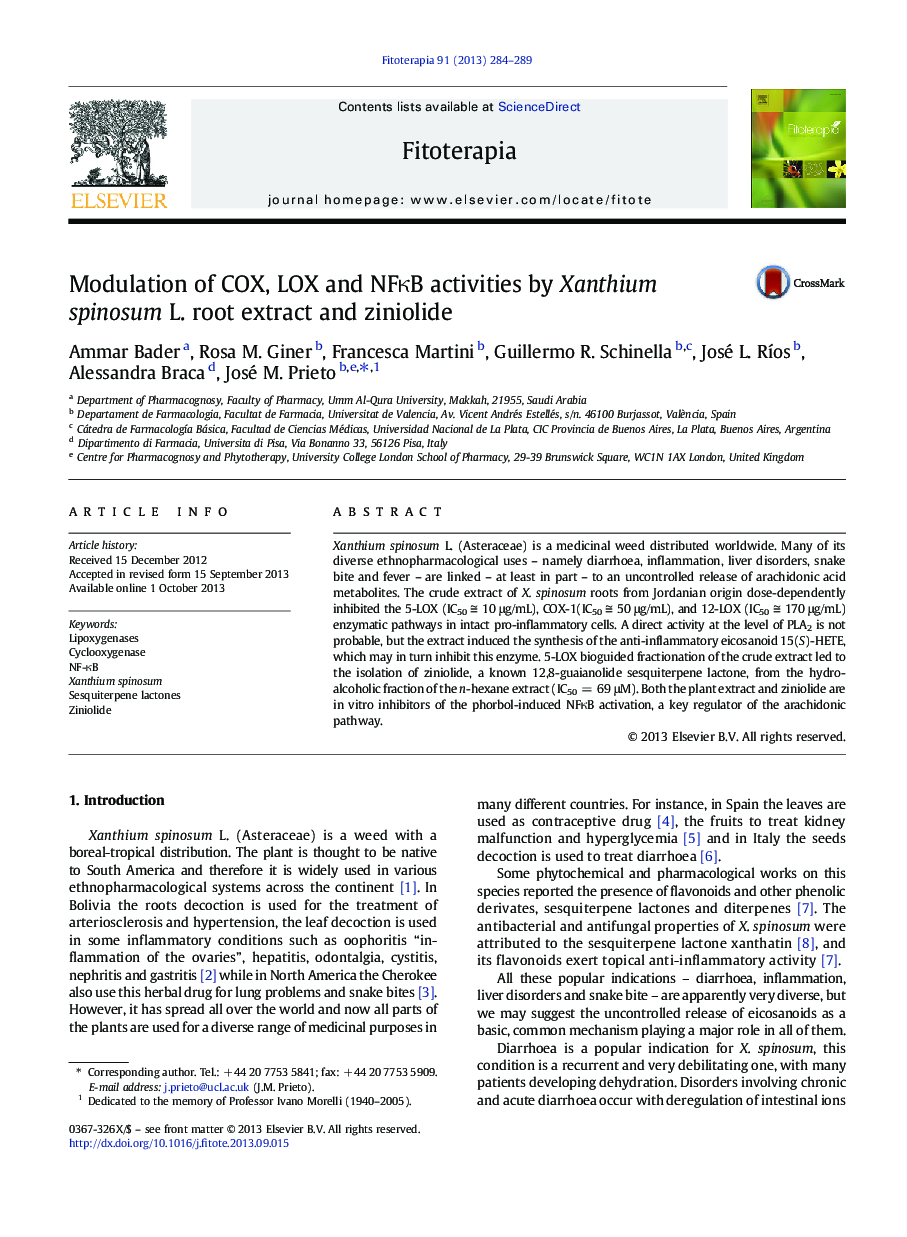| Article ID | Journal | Published Year | Pages | File Type |
|---|---|---|---|---|
| 2538660 | Fitoterapia | 2013 | 6 Pages |
Xanthium spinosum L. (Asteraceae) is a medicinal weed distributed worldwide. Many of its diverse ethnopharmacological uses – namely diarrhoea, inflammation, liver disorders, snake bite and fever – are linked – at least in part – to an uncontrolled release of arachidonic acid metabolites. The crude extract of X. spinosum roots from Jordanian origin dose-dependently inhibited the 5-LOX (IC50 ≅ 10 μg/mL), COX-1(IC50 ≅ 50 μg/mL), and 12-LOX (IC50 ≅ 170 μg/mL) enzymatic pathways in intact pro-inflammatory cells. A direct activity at the level of PLA2 is not probable, but the extract induced the synthesis of the anti-inflammatory eicosanoid 15(S)-HETE, which may in turn inhibit this enzyme. 5-LOX bioguided fractionation of the crude extract led to the isolation of ziniolide, a known 12,8-guaianolide sesquiterpene lactone, from the hydro-alcoholic fraction of the n-hexane extract (IC50 = 69 μM). Both the plant extract and ziniolide are in vitro inhibitors of the phorbol-induced NFκB activation, a key regulator of the arachidonic pathway.
Graphical abstractFigure optionsDownload full-size imageDownload high-quality image (113 K)Download as PowerPoint slide
